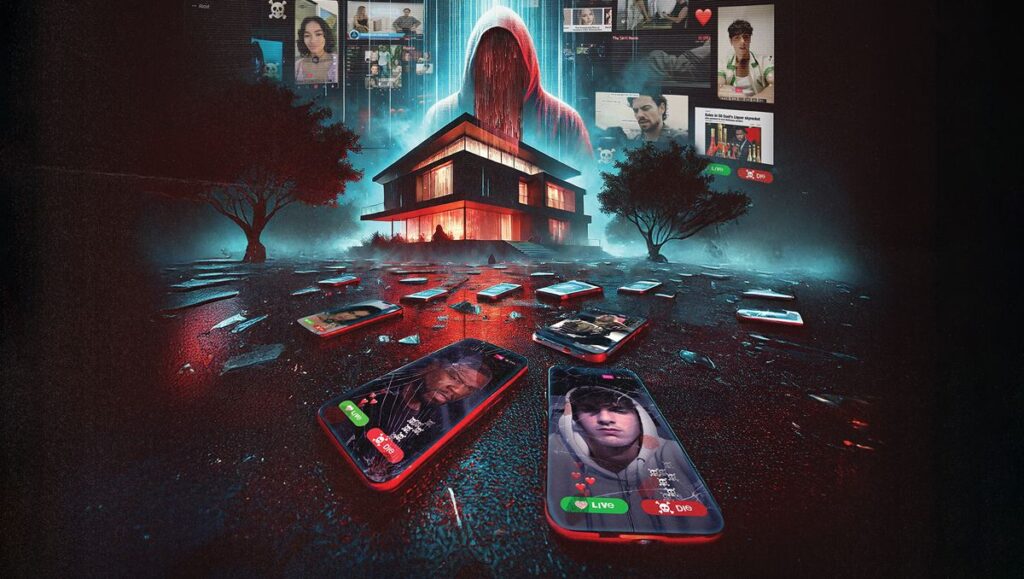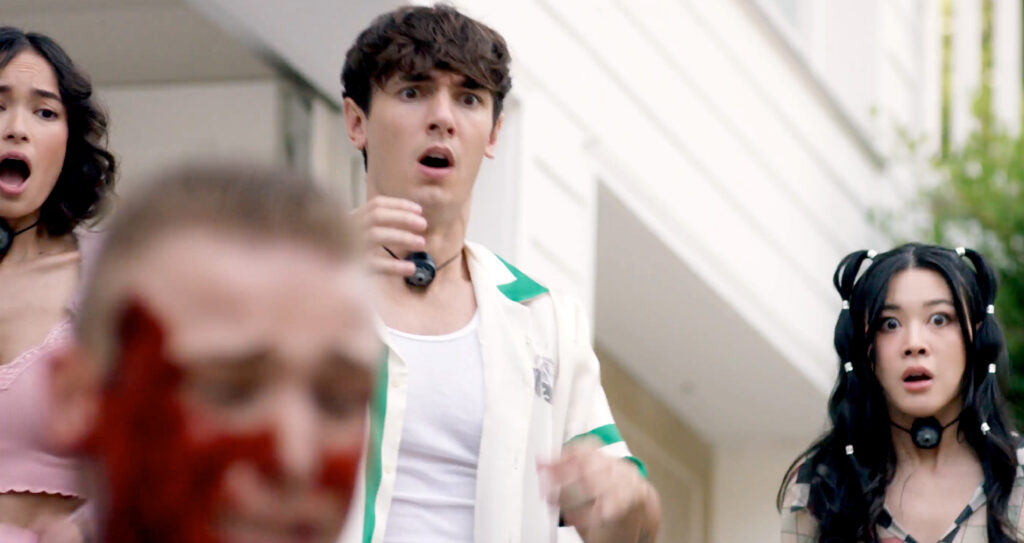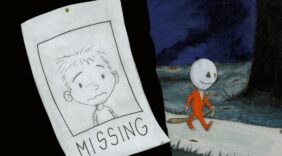
The Evolution of Horror Thriller Movies on Camera: From Found Footage to Livestreams
Written by on Jul 10, 2025 9:57 AM

The genre of found movie footage revolutionized how audiences experienced fear, pulling them directly into the action with an unprecedented sense of immediacy. These groundbreaking horror thriller movies bypassed traditional cinematic storytelling, instead presenting viewers with raw, unedited footage ostensibly discovered after a terrifying event.
This innovative cinematic approach, often characterized by shaky cameras and first-person perspectives, blurred the lines between fiction and reality, making the terror feel more visceral and genuinely unsettling than ever before. It established a new paradigm for suspense, proving that what you don’t explicitly see can be far more frightening than any on-screen monster.
As technology advanced, so too did the methods of capturing horror. The original concept of “movies found footage” evolved seamlessly into the digital age, embracing smartphones, webcams, and, most powerfully, social media horror livestreams.
This natural progression allowed filmmakers to exploit our modern reliance on interconnectedness, transforming everyday digital interactions into new conduits for terror. Whether it’s a video call gone wrong or a live broadcast from an ill-fated adventure, the integration of these familiar platforms amplifies the psychological dread, making these contemporary horror thriller movies feel chillingly plausible and deeply personal. The fear now isn’t just “found”; it’s streaming directly into our lives, in real-time.
Enter Skillhouse, a film that represents the apex of this evolutionary journey from found footage to social media nightmare. Written and directed by Josh Stolberg, known for his work on Saw X and Jigsaw, this isn’t just another entry in the social media horror subgenre, it’s a brutal culmination of everything that scary movies out in 2025 and earlier have been building toward.
The premise alone feels like the inevitable endpoint of our clout-obsessed culture: ten top influencers kidnapped and forced into a deadly social media showdown where every like, share, and follow becomes a fight for survival. The world watches and wagers as the least popular contestant is executed by the masked Triller Killer. It’s a concept so darkly logical that it feels less like fiction and more like a prophecy.
What sets Skillhouse apart from its predecessors is its understanding that the real horror isn’t just the violence, it’s the audience’s complicity in it.
The film’s tagline, “Fame is currency. Death is content. Clout is life,” captures the nauseating logic of a world where human suffering becomes entertainment currency. This isn’t just about people dying on camera, it’s about the systematic monetization of that death by an audience that can’t look away.
The Blair Witch Project (1999) – Daniel Myrick and Eduardo Sánchez pioneered the handheld camera technique, using consumer-grade equipment to create unprecedented realism that made audiences believe they were watching actual documentary footage.
Paranormal Activity (2007) – Oren Peli revolutionized movies found footage with static security cameras, proving that immobile perspectives could be just as terrifying as shaky handhelds.
REC (2007) – Jaume Balagueró and Paco Plaza perfected the single-location concept, using a news camera to trap audiences in claustrophobic terror alongside the characters.
Cloverfield (2008) – Matt Reeves brought found footage to blockbuster scale, using a single handheld camera to document a monster attack with unprecedented immediacy and scale.
Chronicle (2012) – Josh Trank demonstrated how found footage could evolve beyond horror, using multiple cameras and supernatural telekinesis to justify impossible camera angles.
V/H/S (2012) – Radio Silence collective introduced an anthology format, showcasing how different recording technologies could create distinct horror experiences within a single film.
Sinister (2012) – Scott Derrickson blended traditional cinematography with found footage elements, using discovered film reels to create a hybrid approach that influenced later horror thriller movies.
The Visit (2015) – M. Night Shyamalan rejuvenated the genre by having children document their grandparents, proving that found footage could work for psychological horror beyond supernatural themes.
Unfriended (2014) – Levan Gabriadze pioneered the computer screen format, moving found footage into the digital age by presenting the entire story through video chat and social media interfaces.
The Poughkeepsie Tapes (2007) – John Erick Dowdle created the most disturbing example of faux-documentary style, using police evidence footage to blur the line between fiction and reality.
Grave Encounters (2011) – The Vicious Brothers perfected the paranormal investigation format, using night vision and thermal cameras to create a template for countless imitators.
The Taking of Deborah Logan (2014) – Adam Robitel demonstrated how found footage could tackle dementia and aging, proving the format’s versatility beyond traditional horror themes.
As Above, So Below (2014) – John Erick Dowdle brought found footage to underground exploration, using helmet cameras to create claustrophobic terror in the Paris catacombs.
Creep (2014) – Patrick Brice created intimate psychological horror using a single camera operator, proving that found footage could work for character-driven stories.
Host (2020) – Rob Savage revolutionized the format for the COVID era, using Zoom video calls to create genuine pandemic-era scares that felt authentically contemporary.
Rec 2 (2009) – Jaume Balagueró and Paco Plaza seamlessly continued their story in real-time, proving that found footage sequels could maintain continuity and escalate terror.
The Ritual (2017) – David Bruckner incorporated found footage elements into traditional cinematography, creating a hybrid approach that influenced modern horror filmmaking.
Lake Mungo (2008) – Joel Anderson perfected the mockumentary style, using interview footage and family videos to create haunting psychological horror.
Cam (2018) – Daniel Goldhaber pioneered livestream horror, using webcam technology to explore digital identity theft and online performance anxiety.
One Cut of the Dead (2017) – Shinichiro Ueda deconstructed the entire genre with meta-commentary, using a single continuous shot to reveal the filmmaking process while maintaining genuine scares.
The casting choices reinforce this meta-commentary, featuring actual social media personalities like Bryce Hall and Hannah Stocking alongside veteran actor Neal McDonough.This blend of real influencers and established actors creates an unsettling ambiguity about what’s performance and what’s reality, a confusion that mirrors our own relationship with social media personas.
From a technical standpoint, Skillhouse represents the full evolution of camera-based horror. Where early found footage films used single cameras and limited perspectives, this film embraces the multi-camera, multi-platform reality of modern social media.
The horror unfolds across multiple streams, feeds, and platforms simultaneously, creating a viewing experience that feels authentically chaotic and overwhelming.
The film’s exploration of “post or die” mentality takes the performative anxiety of social media to its logical extreme. Characters aren’t just fighting for their lives, they’re fighting for engagement, for relevance, for the validation that has become more important than survival itself. It’s a commentary on how social media has rewired our reward systems, making digital approval feel more essential than physical safety.

You don’t want to miss the chance to witness this groundbreaking horror movie in theatres. Experience the future of horror when Skillhouse hits theatres everywhere July 11th, offering audiences a chance to witness what happens when our digital obsessions meet their most brutal conclusion.
The evolution from found footage to social media horror is responding to genuine cultural anxieties that have reached a breaking point.We’re living through the first generation to grow up entirely online, where digital identity and real identity are indistinguishable, where social media algorithms shape reality more than traditional media ever could.
The rise of platforms like TikTok and Instagram has created a culture where everyone is simultaneously the performer and audience, where private moments become public content, and where the line between one’s authentic self and curated persona has blurred.
These platforms have gamified human interaction, turning likes, shares, and comments into a form of social currency that can make or break careers, relationships, and mental health.
This cultural shift has created new forms of anxiety that traditional horror couldn’t address. The fear of having your content ignored, of losing followers might seem trivial to older generations, but for those who’ve grown up online, they represent genuine threats to one’s confidence, identity, and social standing. Modern horror films understand that these digital anxieties are as real and terrifying as any physical threat.
As we look toward the future, the evolution of camera-based horror shows no signs of slowing. Emerging technologies like virtual reality, augmented reality, and artificial intelligence are creating new possibilities for horror that we’re only beginning to explore. The integration of these technologies with social media platforms suggests that the line between horror entertainment and digital reality will continue to blur.
Virtual reality horror experiences are already experimenting with ways to make audiences feel like they’re actually present in horrific situations. As VR technology becomes more accessible and social, we may see horror experiences that are genuinely traumatic in ways that traditional media never could be. The ability to share these experiences through social media will likely amplify their impact.
Artificial intelligence is also creating new possibilities for more personalized horror. AI systems that can analyze individual users’ fears, preferences, and psychological profiles could create horror experiences that are uniquely tailored to each person’s specific anxieties. This level of personalization could make horror more terrifying for the audience.
The rise of deepfake technology has already begun to influence horror, creating new possibilities for identity theft and impersonation that go far beyond what early films like “Cam” could imagine. As this technology becomes more sophisticated and accessible, the horror of having your likeness used without permission will likely become an even more pressing concern.
Interactive horror experiences that respond to audience participation are also becoming more sophisticated. Films that can adapt their content based on real-time audience reactions, social media engagement, or even biometric data could create horror movie experiences that are genuinely unpredictable and responsive to individual viewers.
The globalization of social media has also created possibilities for horror that transcends cultural boundaries. Films that can tap into universal anxieties about digital technology while incorporating local cultural elements could create a new form of global horror that speaks to the shared human experience. As highlighted in our comprehensive guide to the best new horror movies of 2025, films like Skillhouse represent just the beginning of this evolution. The future of horror will likely be even more integrated with social media, more responsive to audience participation, and more capable of creating genuinely traumatic experiences that blur the line between entertainment and reality.
The evolution from found footage to social livestream horror represents more than just a shift in filmmaking techniques, it’s a fundamental reimagining of what horror can be in today’s digital age.
Where early movies relied on the authenticity of the camera to create fear, modern horror thriller movies understand that the camera itself has become a performer, shaped by algorithms and audiences in ways that make traditional notions of authenticity obsolete.
This evolution reflects our own transformation as a culture. We’ve become a society that lives through screens, that measures worth in likes and shares, that has internalized the logic of social media algorithms to the point where we unconsciously optimize our behavior for maximum engagement. Horror films that understand this transformation don’t just scare us, they hold up a mirror to our digital selves and show us the deepest shadows that exist within. Films like Skillhouse represent the culmination of this evolution, taking the performative anxiety of social media to its logical, horrifying conclusion. By forcing characters to literally perform for their lives, these films make explicit what has always been implicit in our digital culture: that attention is currency, that engagement is survival, and that the audience is never innocent.
Skillhouse premieres in theatres everywhere on July 11. Click here to buy tickets for Skillhouse now.




"*" indicates required fields